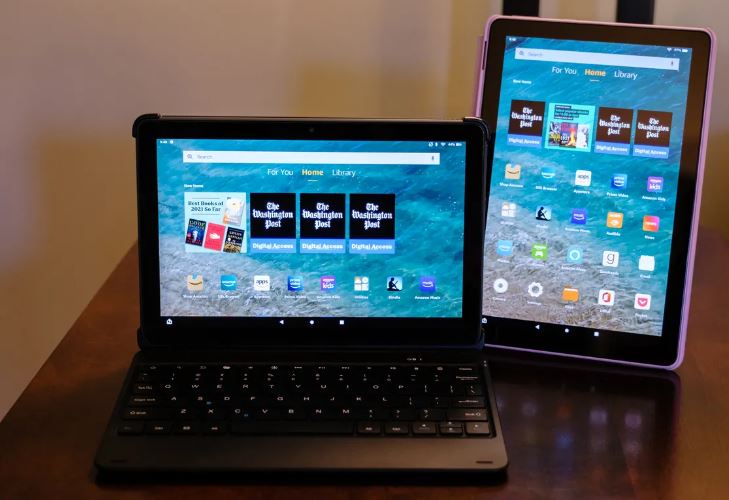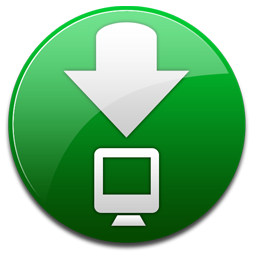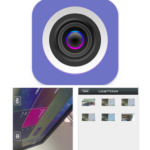Ka bomalimabe, there is a well-known, ongoing design issue with several Kindle Fire models, and Amazon seems to have had trouble fixing it.
In particular, the chargers for the Fires frequently malfunction in one way or another, making it difficult for the devices to charge even when they are flawlessly functional in all software and physical aspects.
Tablets that won’t charge are incredibly annoying since, like all tablets, the Fire depends on its battery to function, which means that you won’t be using it very much if the battery won’t charge.
Fortunately, there are a number of troubleshooting techniques you can use to identify the cause of your charging issues, and in this quick tutorial, I’ll show you how to fix it. We’ll also talk about some preventative measures you can take to avoid developing “charger port rot,” which is the root of many of these charging issues.
I’ll also discuss various MacGyver-style solutions for charger port issues. Qetellong, I’ll offer a few guides for comprehensive repairs of your Fire’s charger-related parts.

Tse ka Hare
Diagnosing the Problem
If a tablet won’t charge, there are four possible reasons why. An configuration or software problem is the first likely explanation. Also possible is a problem with the battery itself. Thirdly, there might be a problem with the adaptor or charging cord. The tablet’s actual charging port may also experience problems, which isn’t the least of them. Each of these choices will be looked at separately.
Test the outlet
Verify that the outlet you’re trying to charge from has electricity. Seems quite simple, but occasionally the obvious things are what catch us.
Test the charging adapter
It’s very simple to identify the issue if the charging adaptor (the small square that connects into the wall) isn’t functioning. Check to check if your Fire can be charged from a computer or other USB power source using the cable rather than the charger. If it does, the charger was the issue.
It’s crucial to remember that not all chargers are made equal; they have various amperages and perhaps even varied voltages. When using a charging adaptor, most Kindle Fires require 5 volts at 1.8 amps; if the converter supplies less, your Fire may charge slowly or not at all.
The same may be true if you connect your USB cable straight to a USB charging port on your computer or another device. These connections are capable of delivering up to 0.5 amps of power. If the charging adaptor is the issue, fresh, authentic models are reasonably priced and simple to purchase directly from Amazon.
Test the cable
The charger and your Fire are connected by a USB cable, making up the other half of the hardware setup. We checked out the charging block above.
The USB cable itself must then be tested next. Fortunately. Since all micro-USB cables are essentially the same, try borrowing another one from a different device—likely your smartphone—or a friend to see whether switching out cables will enable you to charge your Fire.
If it does, you know your cable was the source of the issue; change it. These are available on Amazon.
Test the charging port
Numerous Fire models are infamous for having a poor charging port. The circuitry inside the Fire where the port links to the battery cable inside may become loose or separate entirely as a result of repeated connection and disconnection.
Make sure the charging cable is positioned firmly before connecting it. Try to gently move the cable within the socket if it appears secure. It can be loose if it moves around.
Insert the charger after flattening the Fire. The internal wires may re-connect as a result, enabling the device to charge. It continues to function even though it is not perfect.
If this method of charging succeeds where previous attempts have failed, the port is the source of the issue. This guide demonstrates how to examine the relationships inside the Fire, albeit it is not for the timid.
If your Fire is over its warranty period and you are confidence in your abilities, I would advise against trying this. Haeba ho se joalo, you’ll need to carefully monitor the connection when charging it or get a new device altogether.
Reset the Fire
Even if all of your hardware seems to be in good working condition, you might still have a software issue. Restarting everything from scratch should enable charging. If your Amazon Fire only charges up to a certain amount, it can be a software problem.
- Hold down the power button for 20 seconds to make sure the Fire is off.
- Turn on the Fire by pressing the power button.
You are merely making the Fire go out and then come back on. This will force-quit any apps that could be preventing charging and reset the device’s voltage.
Factory reset the Fire
The factory reset should only be used when all other alternatives have failed. After being cleared of anything you’ve loaded onto it, your tablet will be returned to its factory default settings. There is no guarantee that it will fix the not charging issue, however it seems to have worked for several consumers.
- Save every piece of information if you can make your Fire work.
- From the home screen, slide down to reveal the menu.
- You’ll see a drop-down menu.
- Make the Factory Defaults Reset choice.
- Reset will complete the factory reset.
This will completely wipe your smartphone clean and remove everything on it, as already said. When you’re done, force the system software to refresh to make sure you’re utilising the most recent version. If content loss is a worry, your purchased books are stored on a cloud server.
- Press the power and volume up buttons at the same time for 40 seconds.
- When the screen says “Installing the newest software,” release the power button but continue to hold down the volume button.
- Restart your Fire after installing the update.
He’s still dead, Jim
If you’ve tried all these solutions – switching the outlet, charger, and cable; inspecting the port and internal connections; and performing a full reset on your tablet – and it still doesn’t work, then… then regrettably, the news is not good. The issue is most likely being caused by your battery.
Even though Amazon does not recommend it, you can change the battery in your Fire. Leha ho le joalo, new Kindle Fires cost almost as much as replacement batteries, so you should definitely simply think about buying a new one instead.
Preventing Charger Port Rot
The MicroUSB architecture is extremely prone to physical stress because it relies on several tiny wires being connected to a circuit board. Although soldering does provide the connection some mechanical strength, that is not what it is intended to do. Solder is used to hold a wire to a component.
The glue or solder holding the port on the circuit board inside the device is subjected to a small amount of mechanical stress with each insertion and removal of the charging cable, and over time the connection may break and the port may become loose.
Even if you use your Kindle Fire frequently, there are a few things you can do to delay or even stop the start of port rot.
Keep the port clean
A charging port might become clogged with lint, dust, and dirt and stop functioning properly. A sewing needle can be used to carefully remove any dust or dirt from the port.
You can also occasionally blow out any debris in the port with a can of compressed air. You don’t want to damage the contacts in the port, so exercise extreme caution (especially while using the needle).
Don’t charge and play
Don’t charge the Fire while using it. Don’t use it while it is charging. Worse yet, when we use our tablets while they are charging, we frequently utilise the cable as a mechanical support for the device, which places additional stress on the cable and port combination.
Ka hona, use your Fire without a cable; if the battery runs low, switch it off, plug it in, and then move on to anything else.
Use quality cables
Although all MicroUSB charging cords share the same fundamental structure, there are some variations. For example, very inexpensive, poor-quality cables may be sized haphazardly, stretching out the receptor port or bending the pins inside it while still making a connection.
Use cables with excellent engineering. Although you don’t have to pay $30 on a “quality” cable, stay away from ones from the dollar store or other shops.
Rubber Bands
Your Kindle Fire’s charging period may frequently be extended by many weeks or even months by using a strong rubber band. When the charging cable is introduced, the Fire may begin to charge, but the charge may be extremely sluggish or it may stop charging when the wire is withdrawn.
This is because the port is somewhat slack, and a proper connection may be formed by firmly inserting the cable into the port.
By first wrapping it around the base of the cable end, you COULD use a rubber band to completely enclose the body of your Fire. The connection is safe enough to get a decent charge now that the rubber band is holding the cable into the port.
Be aware that you are pushing something that has already been put into position and applying more pressure to the connector by doing this. Eventually, the port will become completely unsafe and collapse.
Pliers
Don’t do this on your brand-new charging cable, but if you have a cable that is otherwise functional but simply won’t connect with your Fire, the issue may be that the charging port or the cable end have become stretched in one or more dimensions as a result of regular use.
The cable end can be applied to the pliers very gently and then squeezed to thicken it in one or both directions. For example, gently squeeze the cable end at the top and bottom to make it wider, and softly squeeze the sides to make it fatter.
By doing this, you might improve the fit and get the cable to line up with the port once more and start functioning.
Aluminum Foil
If all else fails, try wrapping a thin strip of aluminium foil around the charging end of the cable before inserting it into the port. This should only be used as a last resort because adding extra metal to a charging situation is not the best course of action.
Even if the connection is otherwise weak, the conductive aluminium will transport the electrons between the cable and the charging port. It might or might not be successful.
By using the foil, you will be confounding the port’s circuitry and it might not stop charging even after the battery is full, thus it’s crucial not to let the Fire overcharge if you use this method. So be sure to watch it.
Surgery
If everything else fails and your Kindle Fire becomes a brick, you may always attempt opening it up and adding a new charging port to the motherboard if you are skilled with small electronics.
Although new ports aren’t pricey (here’s an example for a Kindle port), a novice with a soldering iron shouldn’t attempt this. Although the specific actions to take are outside the scope of this post, you can find instructions elsewhere on how to at least attempt to fix your Fire in this manner.
Battery Replacement
Everything you’ve tried, even Maximum MacGyvering, has failed; your battery is dead, and this time the charging port is not to blame. But everything else on your Kindle Fire is good. This leaves you with two options: send it back to Amazon and exchange it for a new one, or take the prudent and reasonable route.
Getting a new battery
A fresh battery is the first item you’ll require. Unsurprisingly, Amazon doesn’t appear to provide over-the-counter access to “official” replacement batteries. Leha ho le joalo, you may buy Kindle Fire new batteries from Amazon and other websites. Here is an example.
These are from independent battery producers; they are not from Amazon. You must be aware of the battery’s part number, which may be found online in your Kindle Fire specifications before you open the casing or printed on the battery itself once you do. As it turns out, opening up a Kindle Fire and replacing the battery is not that difficult.
It’s not neurosurgery
It should go without saying, but doing this voids the warranty on your Kindle Fire. Leha ho le joalo, doing this isn’t especially challenging. Simply take your time, apply the least amount of force possible, and only gradually increase it as necessary.
You only need one tool, sometimes known as a prying tool or a “opening tool.” To gently pry out the glued-together circuitry of a smartphone or tablet, this gadget essentially consists of a strong but flexible plastic or metal bent bit.
There are numerous variants available. If you don’t mind all your panels getting scraped up and twisted, you could even use a screwdriver. Naturally, Amazon has a great all-purpose opener, but you may use any tool you choose. I enjoy this multi-tool kit because it contains several different openers and allows you to repair many little electronics.
Remove the Back Case
Starting at the lower-right corner of your Fire, work the opening tool into the space between the front and back sections of your case. Gently pry the case apart while holding it open with a penny or another little item.
Release each of the clips keeping the case together as you travel around the case with the opening tool. You will need to carefully pull the case open in order to reach all the clips.
Use more coins or guitar picks to keep open each section of the case to prevent overseparating it while there are still clips in place. This might result in the inside plastic components of the case breaking.
Free the Battery
Break the adhesive holding the battery to the frame by working along the right side of the battery with your opening tool. Work your way down the right side completely before moving on to the left. It is preferable to avoid using metal to pry the battery away because doing so could cause a fire if the battery is punctured.
Insert the plastic opening tool’s tip between the right battery cell and the frame of the Kindle Fire. The battery should be freely mobile once all of the glue has been removed. Lift it up slowly, then push the battery connector out of the socket using the opening tool. You can set the battery aside now that it is no longer attached to the Fire.
Replace the Battery
Connect the new battery to the motherboard by inserting it into the Kindle Fire. Use tape or re-glue the battery. The case’s back will just snap back on. Simply apply little pressure all the way around, and each clip ought to pop back into position.
Qetello
We hope you enjoyed reading about Amazon Fire Tablet Won’t Charge and learnt everything there is to know about it. Your concerns regarding the top Amazon Fire tablet have been answered.
Any questions you may have should be posted in the comments section.






